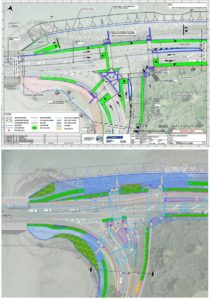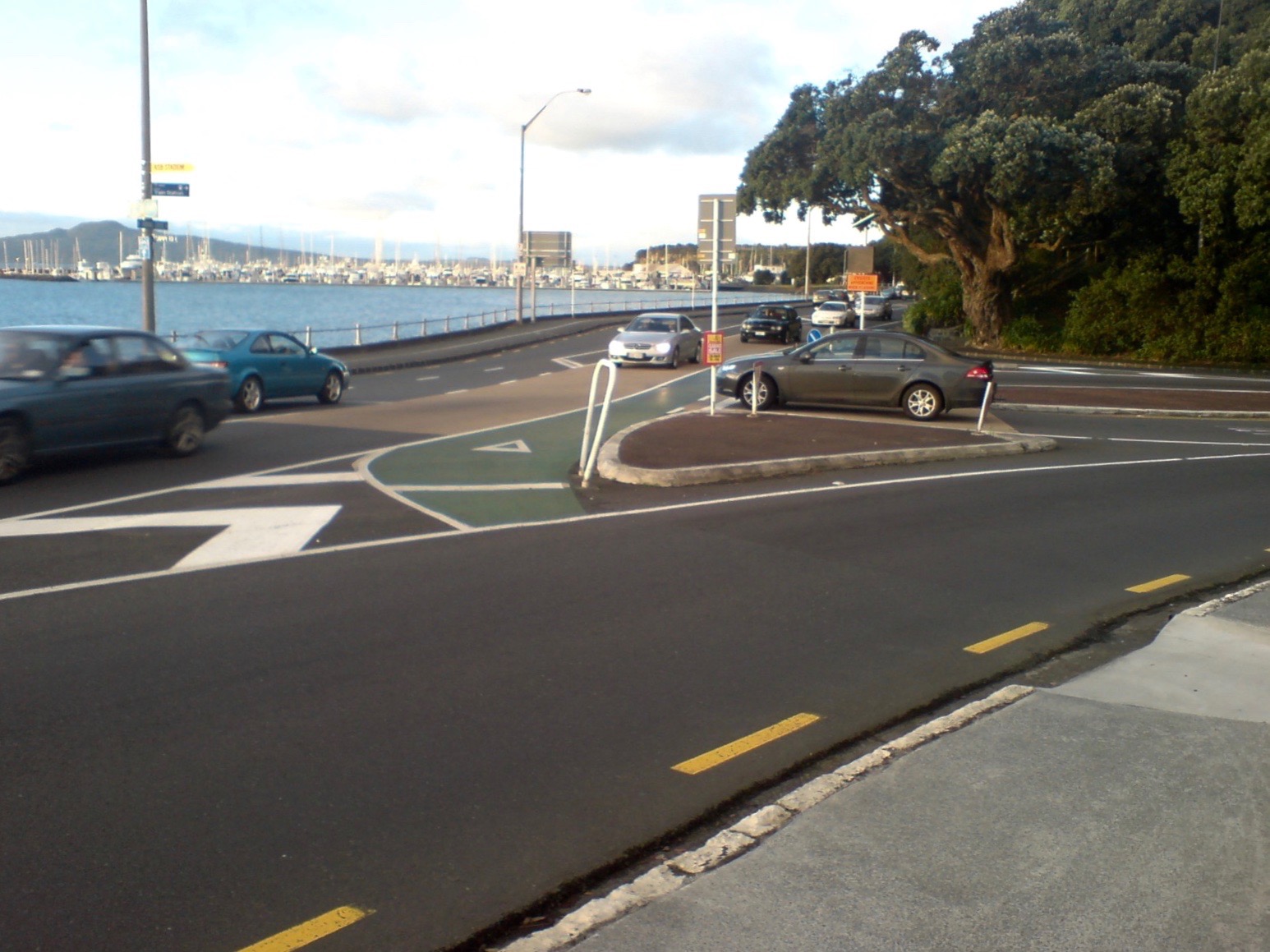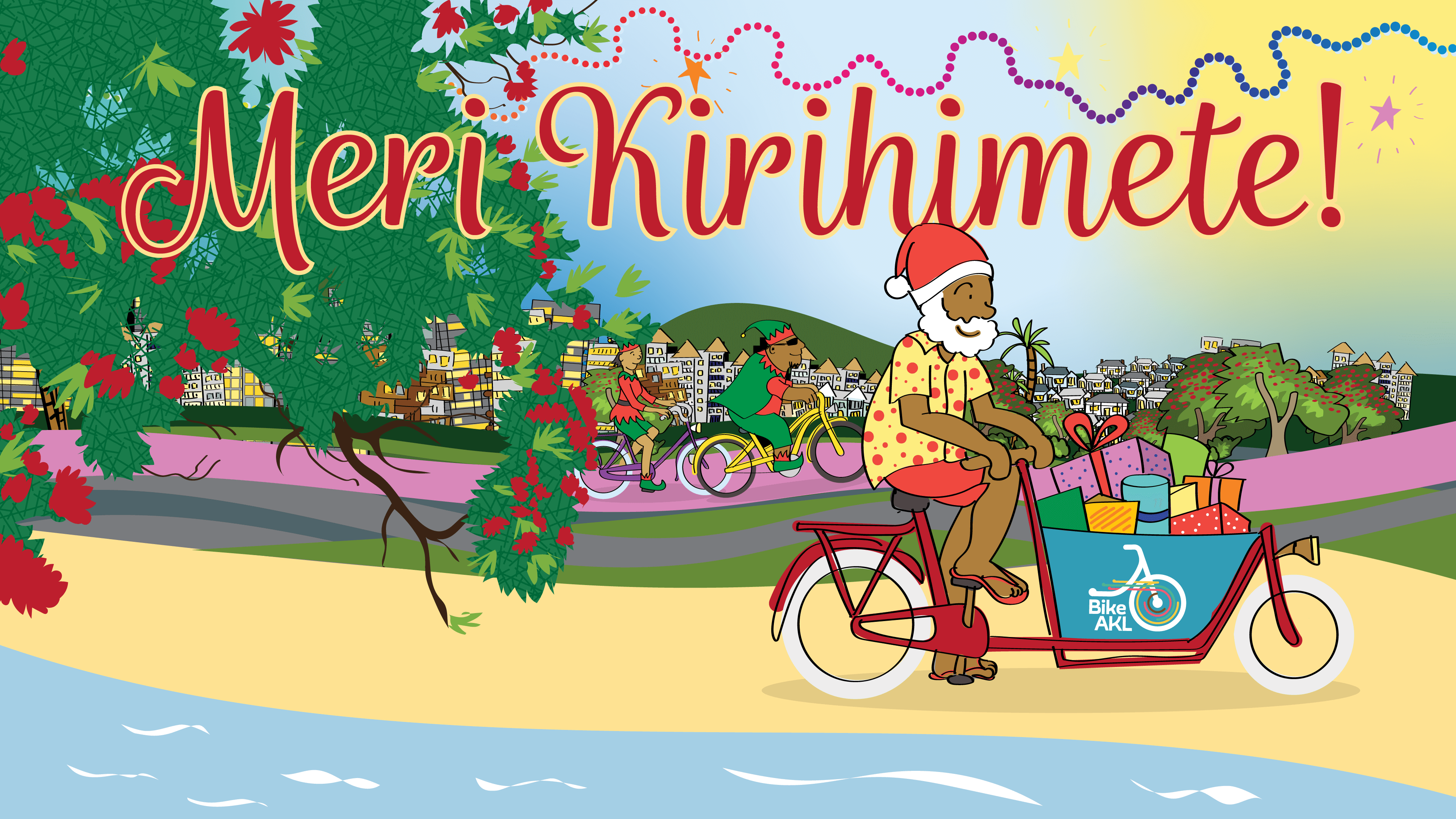The new design for Ngapipi / Tamaki Drive is now much better than the original signals design. Here’s hoping it did well in the consent hearing this week!
With the safety issues for people on bikes at Ngapipi Drive known for so long, it was good to finally see AT’s proposed new layout proceeding to consultation & hearing. But it is fair to say that there is still a lot of controversy about changing this intersection.
First off, there are some who (still) argue that nothing needs to be done at all; or at most, that the intersection only needs minor changes. The broken bones of many victims disagree, and we say we this needs fixing before someone dies! AT agrees in their hearings evidence:
“[T]he scheme assessment has confirmed that the Tamaki Drive and Ngapipi Road intersection is unsafe with 10 times the predicted crash history based on the predicted crash rate using the crash rate analysis from the Economic Evaluation Manual. Particularly for cyclists, there is a clear crash pattern with 89% of crashes caused by crossing / turning movements. Crossing / turning movements are also the primary causes of motor vehicle crashes.
Option 1 [the signals now being discussed at the hearing] meets the project objectives of addressing safety concerns for pedestrians and cyclists at Tamaki Drive and Ngapipi Road intersection, balances the safety needs of all road users along Tamaki Drive by removing conflict and provides good efficiency during both the morning and evening peak periods.
Therefore it is recommended to progress Option 1 to the detailed design stage”.
Then there are those who wanted a large multi-lane roundabout – including, shall we say, some key locals. Hmmm – that would result in a cycle safety project that would likely make things WORSE for people on bikes.
Because when people say ’roundabout, we doubt they’re thinking of a Dutch one that gives cyclists and pedestrians priority, with raised table zebras across all arms to slow down drivers. In any case, AT calculated that even a car-centric roundabout would be worse for queues and delays than traffic signals, due to the uneven flows, and this would lead to demands for more slip lanes, etc…
Here’s AT’s comment (from the hearing evidence) on the safety of multi-lane roundabouts:
Roundabouts carrying high traffic flows typically do not provide well for vulnerable road users (i.e. pedestrians and cyclists). Drivers arriving at high volume roundabouts are faced with numerous conflicting movements, and as a result, there is an increased risk that the drivers do not easily see cyclists and pedestrians in amongst the other traffic. This is an obvious safety risk.
The safety problem is worsened at high volume roundabouts on arterial roads due to the higher speed of traffic. By their nature, high volume roundabouts tend to be larger than lower volume roundabouts to allow for the higher flows and large heavy vehicles, and so this encourages higher speeds. In addition, where roundabouts are located on arterial roads, drivers typically have an expectation that they should be able to travel quickly through them to reach their destination.
Vulnerable road users, including inexperienced cyclists and people with disabilities (such as visually impaired pedestrians and people on mobility scooters), feel uncomfortable using high volume roundabouts. They are often required to cross live traffic lanes without the level of protection afforded by traffic signals. For this reason high volume roundabouts typically provide a lower standard of access and movement for cyclist and pedestrians.
Three cheers on that! So to improve safety, and still keep car traffic running, AT went with the signalised design. Even so, the initial response from many in the transport and cycle advocacy sphere was not so positive, as we discussed here. However, Bike Auckland felt that there were some “good bones” to work with.
A key issue for us was the constrained bridge just to the west of the intersection. We have been pushing AT to fix this separately, but as fast as possible. We’ve heard that the bridge may require a rebuild in 10 years or so anyway, maybe it’s time to just get on with it?
Our other concerns mainly related to the original design (as publicly consulted) being too complex for riders, and still not providing decent protection and right-turn safety for people on bikes.
We met with AT a couple of months ago, and they also read up on other people’s comments. The great news is that they were able to incorporate many of the requests we made in our earlier blog linked above, without having to go completely back to the drawing board (which could have set the project back a long time).

What did AT do? Well, here are the design plans for the hearing. At right, you can see a before/ after comparison.
Here’s how AT’s traffic hearings evidence summarized the revisions:
Following receipt of the submissions, AT has made a number of minor amendments to the Project, including:
a) Providing protection for the on-road cycle lanes on Tamaki Drive in the form of physical separators and ensuring the lanes are at least 2m wide where possible. This will allow the provision of separate signals for cycles and the removal of the off-road ramp located on the north side of Tamaki Drive immediately to the east of Ngapipi Estuary Bridge;
b) Providing a right turn pocket for cyclists on the northern side of Tamaki Drive adjacent to the eastern signalised crosswalk. The right turn pocket will provide space for eastbound cyclists to wait and safely make a right turn (a “hook” turn) into Ngapipi Road using during a green signal for cyclists that runs at the same time as the right turn phase for vehicles. All through traffic movement is stopped during this phase;
c) Modifying the shared path located along the western side of Ngapipi Road to provide a separate cycle path and footpath;
d) Removing the northbound cycle feeder lanes on Ngapipi Road and increasing the size of traffic islands to reduce crossing distances and create more waiting space for pedestrians and cyclists at the signalised crossing; and
e) Widening the signalised cycle crossing over the slip lane and the western side of Tamaki Drive to 2.5m.
These amendments are consistent with the notified version of the design and involve minor changes to the layout to optimise safety. The amendments have been made in response to discussions with Bike Auckland.
Good on AT! And also good that they were able to state (a little further along in their evidence) that this design is still “functionally the same” (except for the cycle improvements) as the one they asked for public submissions on. This could be crucial for progressing the project without further delays.
We feel the changes have significantly improved the design for people on bikes, and have said so during our appearance at the hearing, where our Chair, Barb Cuthbert, did a great job of telling the Comissioners why we need change here, why we don’t want a roundabout, and what we like about the changes proposed. While we know the hearing can’t deal with it, Barb also raised the priority to remove the pinchpoint on the road bridge beside Ngapipi Rd. We’re prompting AT to progress the investigation and design work for this, in the expectation that the work will be funded and completed at the same time as the intersection upgrade.
There are certainly a few elements in the new intersection design that aren’t quite there yet, but we have decided that these are either:
- limited enough that they can be fixed later in the final design (e.g. some tweaks to the various bike ramps, path alignments and the layout of the protective dividers); or are
- dependent on that other project – i.e. the western bridge rebuild (to ensure that protected cycle lanes continue across the bridge itself
For now, we sit back and hope that the commissioners heard the sensible voices, and that once consent is granted, one of “New Zealand’s top 10 safety risk” intersections will be fixed promptly! It’s been a long fight.




